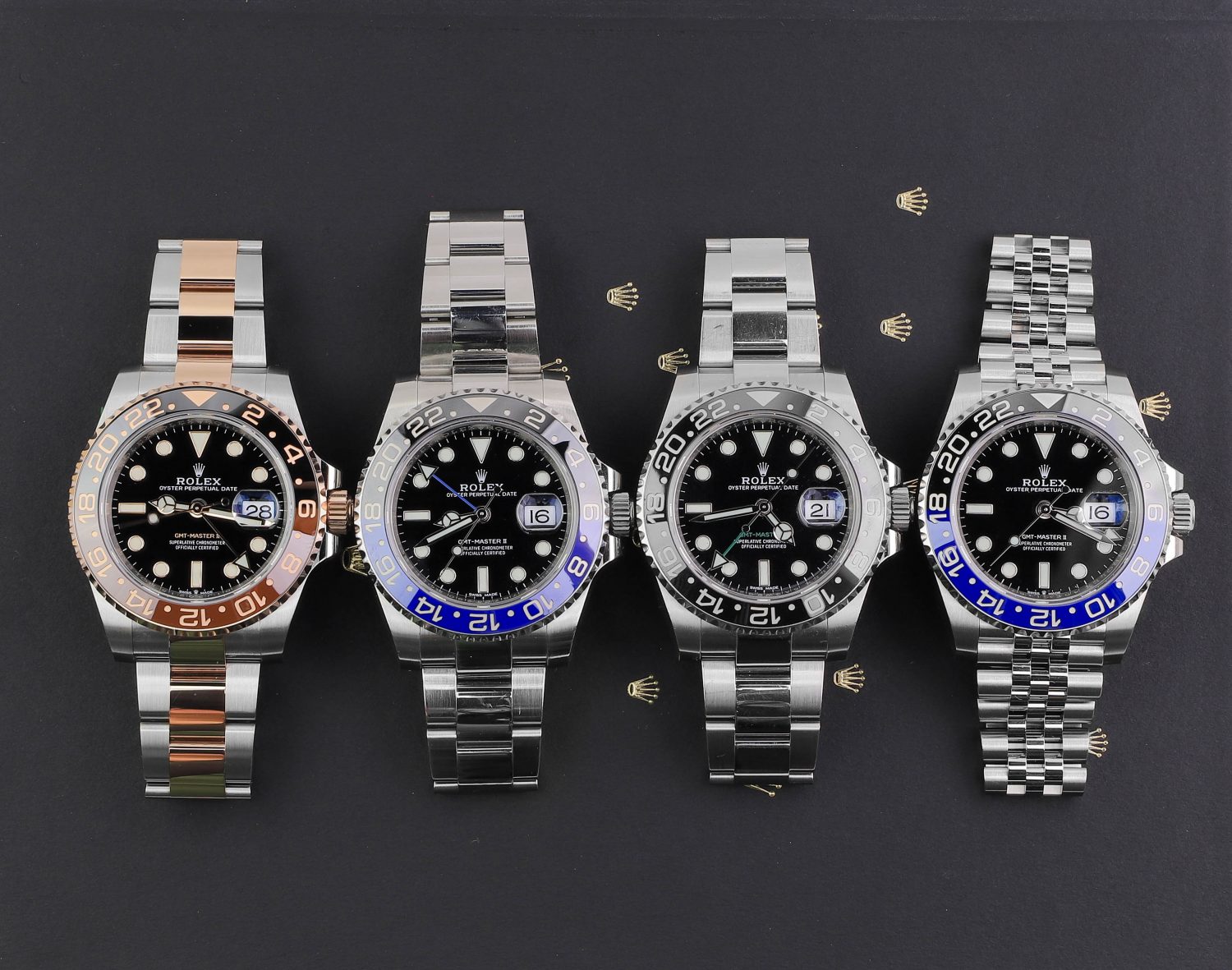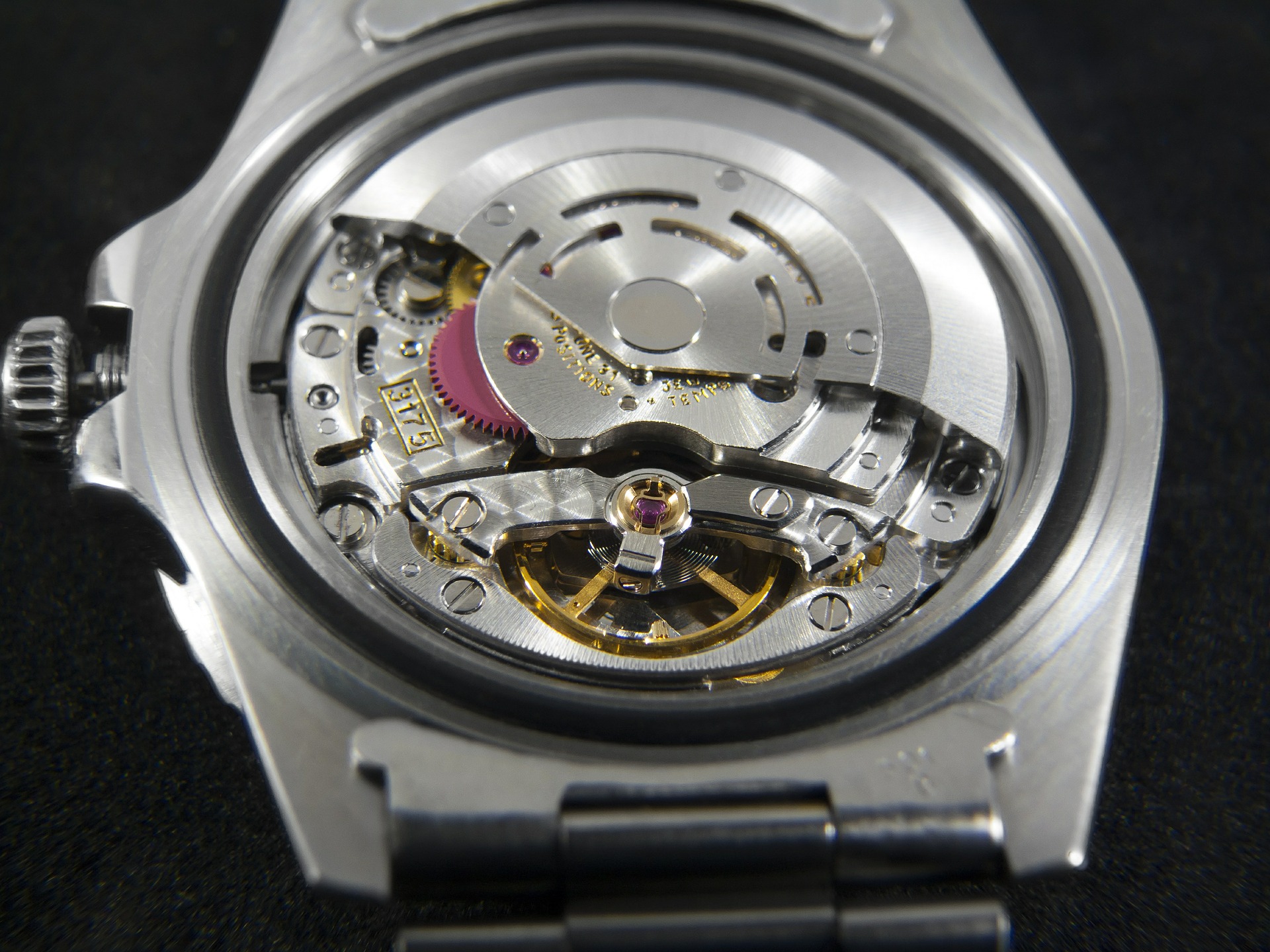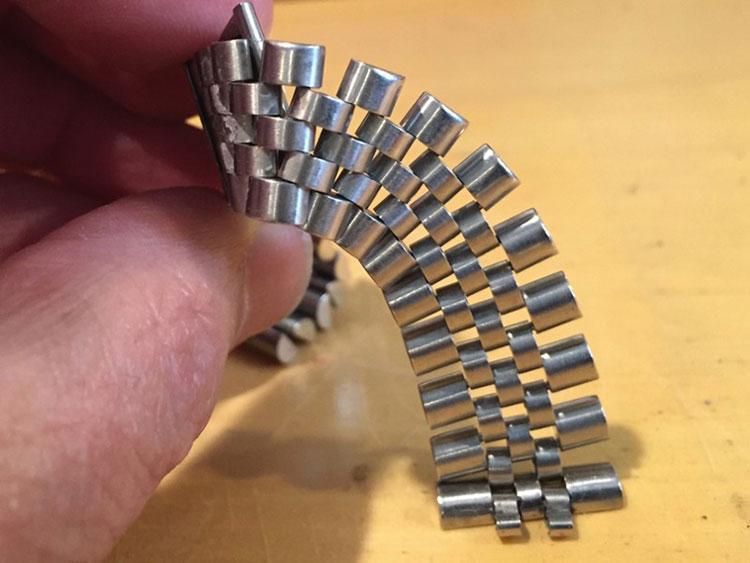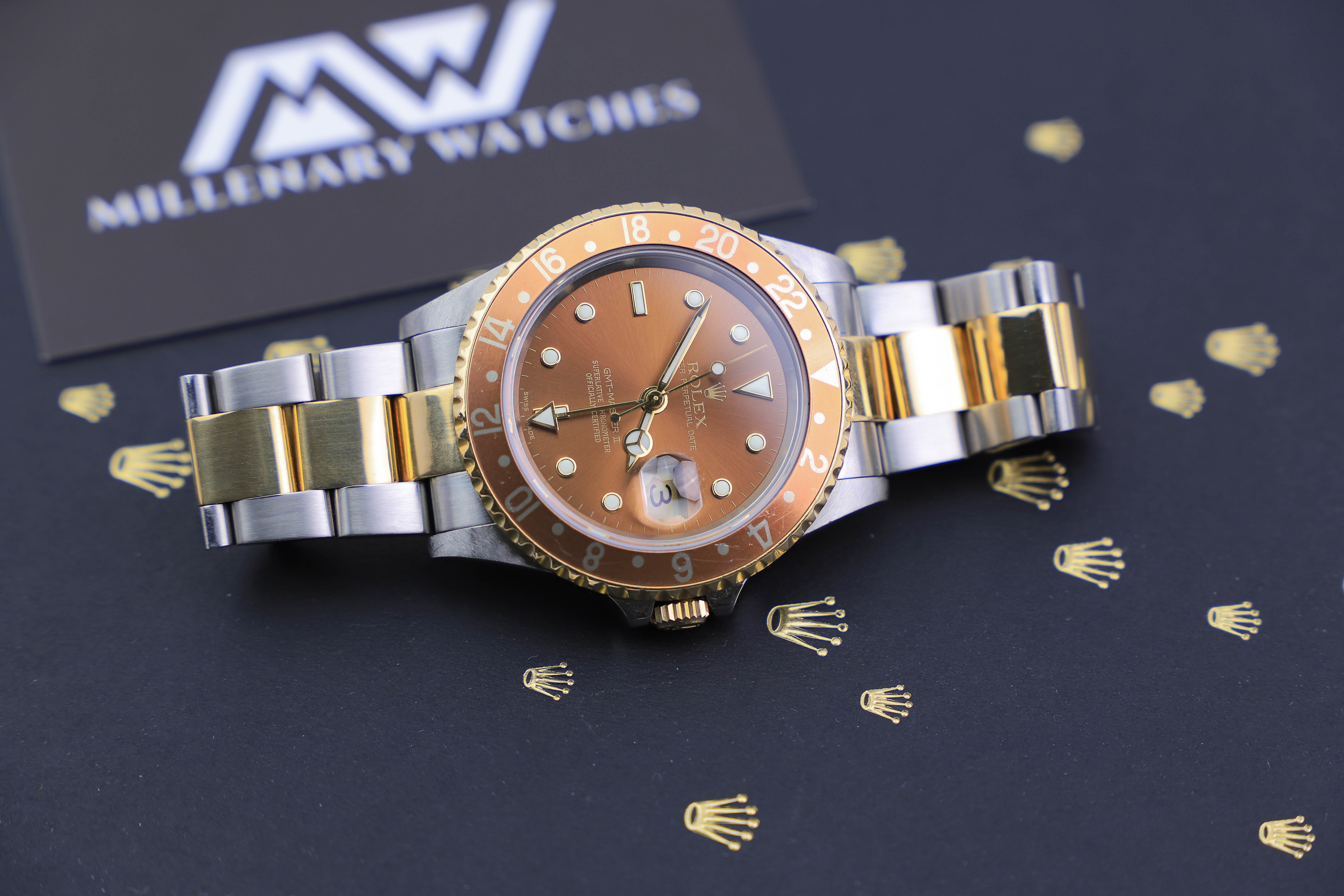
Rolex Buyer’s Guide: Checklist When Buying a Rolex Watch
Are you looking at buying a Rolex watch?
Do you have a hard time knowing where to start, what to consider, or which model to look at?
When buying something that costs as much as a Rolex, it’s a good idea to educate yourself on the product you are going to buy. If you don’t have much knowledge about what it is you are buying, the risk of buying something that isn’t the way it should in one way or another, increases. Furthermore, it is difficult to know whether what you are going to buy is actually a good buy. This refers both to ”worth it” from a financial standpoint and also in regards to whether the watch is in a good condition and has all the correct parts that it should have.

The most important part when buying a Rolex watch is understanding exactly what you are buying. It’s perfectly fine to buy an old and worn Rolex, but as long as you are aware of all the flaws and potential damages, so nothing comes as a surprise further on.
It goes without saying that the older the Rolex watch you are considering buying, the more knowledge and expertise you need to have. This is just like when buying a car. This is because the more time has passed, the more it may have been subject to. This includes wear and tear, replaced parts, wrong parts, or simply in poor condition such as rust or tarnishing.
To help you with your next Rolex purchase, we have compiled a Rolex buyer’s guide with all the things you want to consider when buying a Rolex watch. Save this as a resource so you can go through each and every step every time you are going to buy a Rolex watch.

Rolex buyer’s guide
1. Movement (caliber)
The movement is unarguably the most delicate element of a mechanical timepiece. It is made up of hundreds of parts, and naturally, mechanical things get wear and tear over time and will eventually need servicing.
Before buying a Rolex, it is good to understand the condition of the movement in advance. This is particularly important for older watches. If you are buying a Rolex watch that is only a few years old, the movement has not had a life long enough to wear out, plus the watch is still covered under Rolex’s five-year warranty shall the movement not function properly (As long as you have the warranty card).

One easy way to get some kind of understanding of the movement’s condition is to use a timegrapher. The timegrapher measures the beat of the watch and thus its accuracy. If the movement loses or gains many seconds per day and has an uneven beat rate, then it is an indication that it may be time for a service for the watch.
In terms of functions, you also want to make sure that all functions operate properly. But have in mind that, it is perfectly okay to buy a Rolex watch whose, for example, date function does not work perfectly, as long as you are aware of it. If you factor in the service of the movement in the purchase price, then you know what to expect with the watch, and you know what you are getting.
These are some things you want to consider in terms of the movement’s functions:
Does the date change properly?
On some watches, the date may change, but it does not change perfectly or is not perfectly centered.
Can you feel the rotor inside the watch when you shake the watch?
Some sound from the rotor is, of course, natural, but if it sounds loud, then it is often an indication that the watch needs servicing.
Do the hour and minute hands adjust properly?
Quite self-explanatory. Are they smooth when changing the time?
Does the watch wind well and smooth?
When you manually wind the movement, it should feel smooth. It is easier to know how it should feel if you have wound several other watches with the same movement previously.
Do all the functions work properly?
Try all functions such as the chronograph or Day indicator. Does the chronograph reset and start properly?
2. Accessories
Accessories that come with the watch are not necessary, but the important part is that you are aware of what you are getting (and not getting).

Some people only buy Rolex watches that come “full set”, whilst others prioritize finding the right watch. Naturally, the older the watch is, the less chance there will be that all accessories are still around. Some people use the accessories as an indication that the watch is well taken care of, and may not have been through too many hands.
The single most important thing is the warranty/certificate for the watch because this is exclusive to that particular watch and cannot be replaced. The rest of the accessories can always be replaced.
Does the serial number of the warranty/guarantee match the watch?
This one is important. If a warranty card or certificate is included, make sure the serial number and reference number match your watch. Look at the serial number of the card and then look at the serial number of the watch. Depending on how old it is, the serial number is either engraved at 6 o’clock on the rehaut, or, for older watches, at 6 o’clock between the lugs (behind the bracelet).
Rolex watches come with the original box, manual, warranty booklet, and Certified chronometer hangtag (red or green)
Lastly is the original receipt. Is the original receipt included? For most watches, the original receipt is not included for various reasons. Do you want the original receipt?
3. Crystal
The crystal is something you want to take a look at.
Firstly, is the crystal in good condition? Does it have scratches or chips? Of course, if you are buying an older Rolex watch with a plexi crystal, there will be scratches, but for sapphire crystals, you may not want chips in your crystal. A good idea is to run your fingernail on the rim of the Crystal to check for chips. The good news is that replacing a crystal is not all that expensive.
Furthermore, you want to check if the crystal is authentic and original. Modern watches have a laser engraved crown at 6’oclock. Does the watch have that? Service glasses have an ”S” inside the coronet, so this can be a detail worth noting. A service crystal is not necessarily a bad thing, but it means the crystal has been replaced, which is good to know.
4. Bezel and insert
Are the bezel and insert in good condition?
This is particularly important if the watch has a ceramic insert. Is this dented or scratched? Ceramic inserts are not cheap to replace, so it is worth factoring this in.

When it comes to vintage watches, you need to understand if the original is dented and if it is properly aligned. And is it operating properly, if it has a rotating bezel. It is not uncommon that vintage watches have their inserts changed, so make sure you identify if the insert is original and authentic.
5. The case
Understand the condition of the case. Identify any dents and dings. Superficial hairlines and scratches can easily be polished away, but if it has major dings and deep scratches, it is more difficult to remove them shall you wish to do so.
Does the case have any signs of rust? It is not uncommon for vintage Rolex watches to get rust between the case and case back or to show signs of corrosion between the lugs.
Can you identify signs of laser welding?
Polishing
Polishing is something you want to pay attention to when it comes to the case of a watch. This is particularly important if you are buying a vintage Rolex watch.

Older watches may have been polished many times during their life, and the issue with this is that the case eventually loses its original shape and form. This can particularly be seen on the lugs. Are the lugs thick and sharp? If the watch has been polished a lot, and not by a professional, the lugs tend to lose their sharp lines and look rounded.
For vintage watches, collectors strive to find honest cases that have not been polished a lot (or preferably not at all) in order to maintain the original lines and shapes. It’s better to find a watch that is scratched and well-used but has not been polished, rather than a case that has been overly polished.
6. The Bracelet
The next thing you want to look at is the bracelet.
Firstly, Does the clasp code match the serial number in terms of the estimated production date? Refer to our complete guide to Rolex clasp codes.
The coronet on the clasp is a great indication of how much the bracelet has been polished. Bracelets that have been overly polished tend to have lost their “coronet/crowns” completely or partly. Make sure the coronet is sharp and clearly defined on the clasp.
Is there any stretch on the bracelet?
Make sure you understand the condition of the bracelet by looking at the amount of stretch the bracelet has.

Does it have complete links?
Are the screws in good condition?
The screw heads on the side of the bracelet may have been screwed improperly, which means they can be worn.
Does the clasp close properly?
If the watch features an easy link system, a diver’s extension, or a Rolex Glidelock clasp price clasp, make sure they operate properly.
7. Dial
Is the dial in good condition?
Watch for any scratches, dents, or other damages.

Does it have any damage or scratches?
Has it been relumed?
Older Rolex watches use tritium for their luminosity, and these lose their glowing effect over time. If it is an old watch that still glows, it can be a sign that the dial has been relumed. Another way to tell if the dial has been relumed is to look at the color of the luminous mass on the dial. Is it too white for its age or is it darkened and yellow? Have in mind that this is only for vintage watches as modern watches use Luminova or Superluminova.
Have the hands been replaced?
This is something you particularly want to check for if you are buying a vintage watch. The most important thing is that the hands match the rest of the luminous material on the dial. If they don’t match, then the hands have probably been replaced.
Understand dial variations: Many older Rolex watches have dial variations that are important to know if you are going to buy a Rolex watch. For example meters first on a Submariner. Different dial variations tend to be valued differently, so make sure which dial variation your watch should have, and that you understand which type of dial the watch has. One way that you can do this is to use the serial number to date the production of the watch (only possible for vintage watches), in order to understand if the dial is correct for the production year.
8. Buy the seller
Remember the most important part when buying any watch is to buy the seller. If you buy from an honest and reputable seller, they will disclose all and any relevant information for transparency. These sellers have a lot of experience and expertise with watches and will be able to provide details and information about the watch that you plan to buy.





Thanks for the reminder that I will need to check on the screws when it comes to assessing the quality of a watch I’m planning to buy. I’d like to start collecting vintage watches soon because I’ve always been fascinated with anything that has a time-themed motif. I’m sure that owning very old watches that are hard to come by would be the pinnacle of this interest of mine.
I was thinking about buying a luxury watch recently. But I was not sure what to buy. A lot of money needed to be invested. So, I needed to be sure about the product first. Thanks for sharing these guidelines.
I have thought of buying a Rolex as far back as the 70’s when I was in the service. I should have bought one new back then as prices have soared since then. I know the model I want which is either a 16013 datejust or a 16233 datejust. This information was very helpful. I am strongly looking for a complete set all packaging and documentation that came with the watch when new. I feel if the watch has all of the packaging and documentation, it was most likely cared for very well. I am also interested in a watch that is all original in good condition and not polished. I have a jeweler that I know well, and have dealt with in the past. He is on the lookout for me which is a big benefit as he knows what I want and has many leads.
Hi!
Glad to hear you found it helpful!
The 16013 and 16233 are both stunning and timeless classics. We wish you good luck on your hunt!
Yes, there’s certainly some truth to a full-set watch being more likely to have been owned by someone who has cared and taken care of the watch.
Kind regards,
Millenary Watches